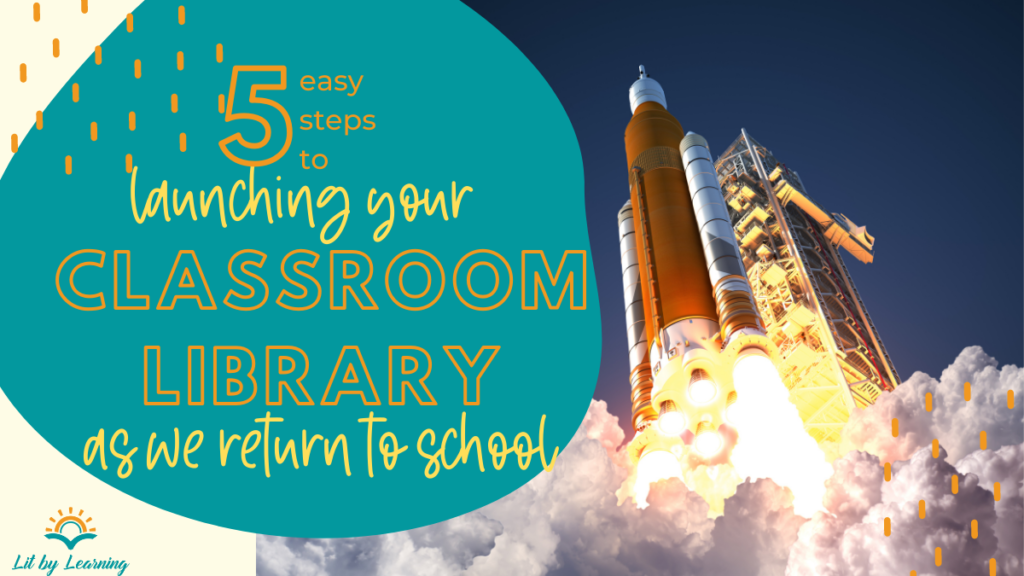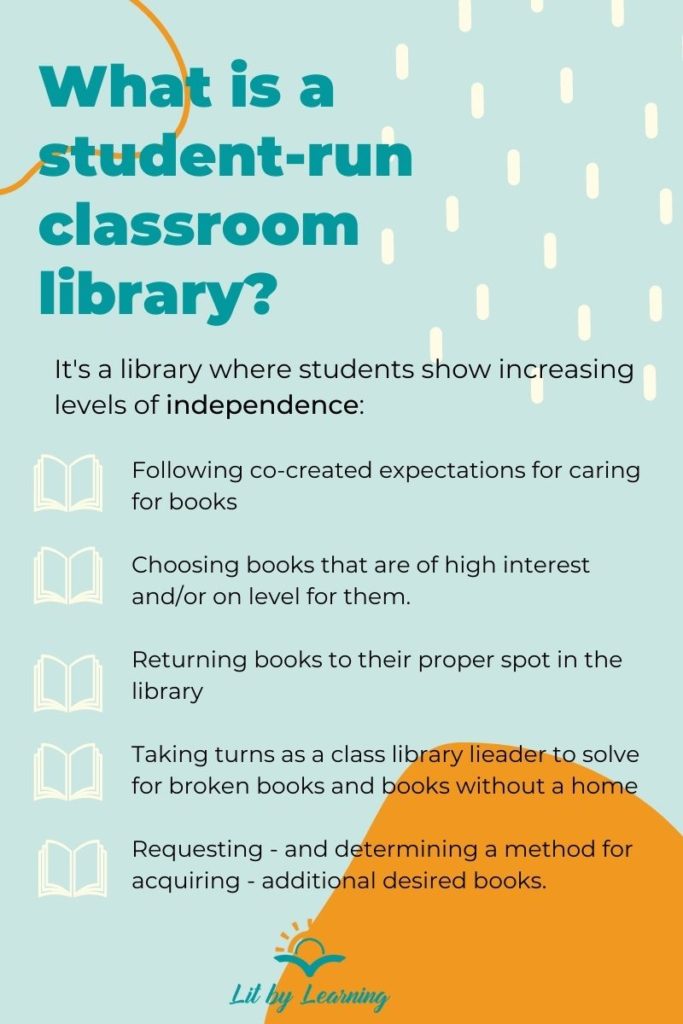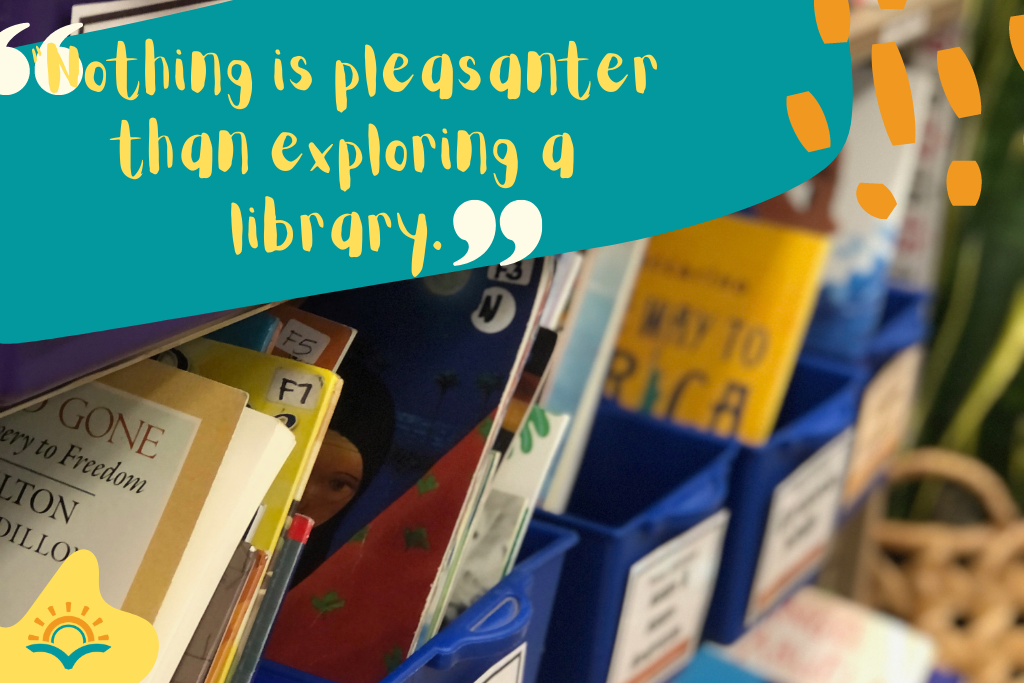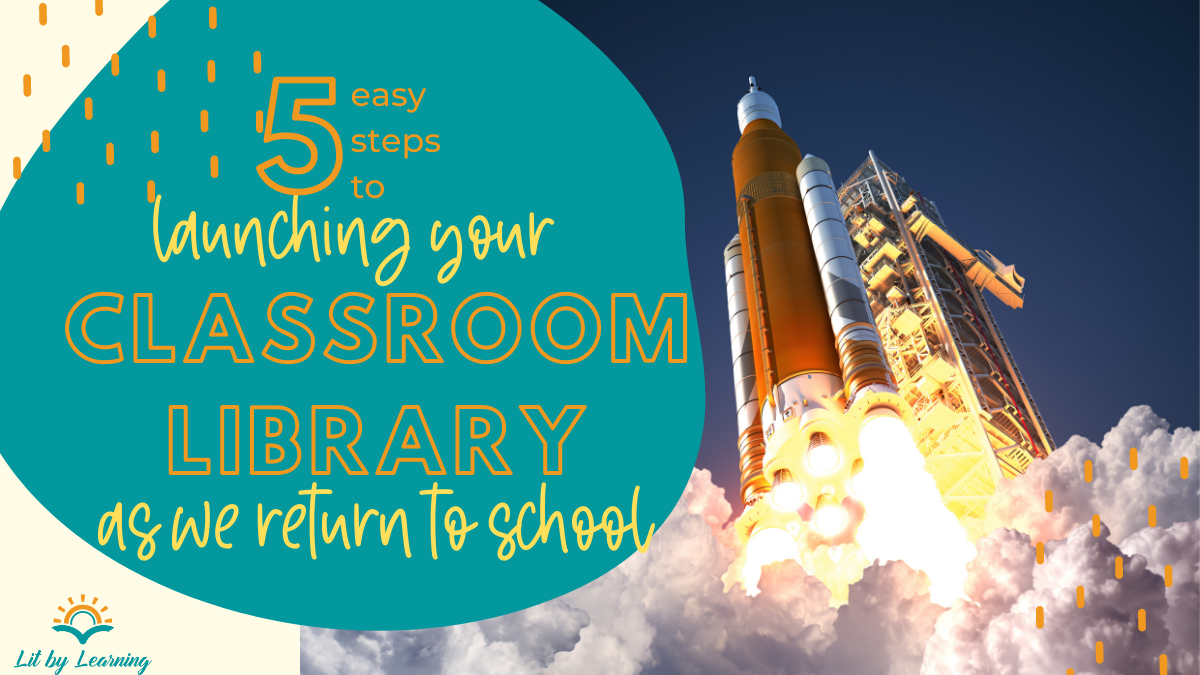
It’s that return to school time of year! You have your classroom library all ready and set to go. You’ve got a solid classroom library organization system. It is labeled, it is lovely. It’s the beautiful focal point as your new students walk into their classroom. They gasp. They’re in awe. They can’t WAIT to get their hands on books.
But hold up! Just because students will be begging to get at the books does not mean you should launch your classroom library on Day 1 of return to school. Read below to find out 5 steps to launching a student-run, student-centered library – without wanting to pull your hair out.
Why students need to be independent in your library
Listen, teacher: you have enough jobs on your plate; adding librarian to them is simply not feasible – or responsible. As we return to school, vow to yourself that THIS is the year you release more responsibility to your students. After all, this is a job students can – and want! – to do. So let them! Regardless of grade level – from Pre-K to 5th – I’ve found that a student-run library is the way to go. For me, this means that students:
- Know the library expectations: how many books to get, how to treat books, etc.
- Know how to find the books that they’re interested in and/or books that are “just right” for them.
- Understand where exactly to put their books back
- Can rely on each other to problem solve library problems
- Take turns being caring for the classroom library.

It sounds like a lot, but it’s possible! Setting the tone as soon as we return to school will set you up for a year of success! Not only will it save you a huge amount of time, but will build a “can do” spirit in your students, giving them ownership over their reading.
5 steps to launch your classroom library as we return to school
1. Build Hype about their classroom library
The library is a precious, sacred area. It holds books that will help students learn new things, travel new places, and connect with characters. Make sure students know how much you love your library. Really, truly make it the most appealing area of your room: colorful, beautiful, and decorated. Let them hear your excitement about getting to “introduce” them to your books – over-exaggerate how special it is.

2. Explore, explore, explore!
Allow students multiple fail-proof opportunities to explore: to just see what is there and let their eyes marvel and their brains start to drool over all the literary goodness. This can take a variety of forms, but I love doing it in a sequence like this:
Gallery Walk
In small groups (no more than 4), have students complete a “See, Wonder, Imagine” gallery walk through the library. With their hands behind their backs, they simply use their eyes to take in the books, the bins and the labels. Chart groups’ “See, Wonder, Imagine”’s to use when you introduce library procedures.
Meet a book bin or classroom library section
In partnerships or small groups, let students explore 1 book bin at a time. For example, Harriet and Gus may look at the History Non-Fiction bin. Prompt students to discuss why these books are grouped together and which books call their attention. Ask if they’ll be choosing from this bin when it’s their turn to shop for books!
Introduce a book bin!
Have students “introduce” a book bin to the class. Once they’ve had an opportunity to explore several bins, prompt students to introduce a book bin as if it were their best friend. They can give it an alternative name, discuss what it’s good at, and “sell” it to the rest of the class!

3. Get dramatic!
Early elementary students LOVE drama and being right! With the rest of the class looking on, model both examples and non-examples of using the library using a fishbowl-type format. Act out putting a book back in the wrong section, dumping all of your books in the same section, etc. Whatever you’ve observed students doing in years past, act it out in a fun, dramatic way and let this year’s librarians correct you.
4. Celebrate!
Make a show out of making book bins: When students are almost ready to “go shopping” for books of their own, make a big deal about presenting them with their book bins where they get to keep their special books that are just for them! If possible, allow students to choose the color of their personal book bin and customize it with their own hand-drawn label.
5. Anticipate common classroom library hold-ups
Anticipate – and proactively plan for – hold-ups. Even with the most pristine of library organization systems, mistakes will happen! This is only bad news if they make you throw in the towel; otherwise, they’re just excellent learning opportunities! Here is how I’ve successfully approached mistakes in my early elementary classroom:
Book Hospital
I have a bin with a classic Red Cross style symbol on it that acts as a home for ripped and broken books. Students can get VERY worried about a broken book; having a place to put it helps a lot!
Books Without a Home
Similar to my book hospital, I always outfit my classroom library with a sizeable “books without a home” bin. Stickers will fall off, students will get flustered as they’re returning books – and I’d rather have the lost ones go in one place than be put back incorrectly on the shelves.
Form a library committee
Just like other classroom jobs, invite some students to be a librarian! They can then be your main string of problem solvers and meet to do things like repair broken books, sift through bins to look for misshelved stories – or whatever! Remember: from return to school and throughout the school year, letting students take the lead will pay off in dividends!
Ready to Launch!
I hope this article gave you some fresh ideas about launching your classroom library at return to school time! I would love to hear what tips you would add to this list; please comment below!
Looking for diverse text to add to your classroom library?
Check out these book recommendations, all perfect for return to school!


